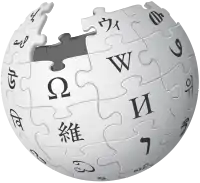煮頃鮒
Japanese
| Kanji in this term | ||
|---|---|---|
| 煮 | 頃 | 鮒 |
| に Grade: S |
ころ > ごろ Grade: S |
ふな > ぶな Hyōgaiji |
| kun’yomi | ||

ニゴロブナ
Etymology
Originally a compound of 似 (ni, “resembles”) + 五郎鮒 (gorōbuna), short for 源五郎鮒.
Variously spelled in kanji as 煮頃鮒 or 似五郎鮒. The 煮頃 spelling for nigoro is likely ateji. Meanwhile, the 似五郎鮒 spelling points to the likely derivation: this spelling parses out to "resembling (gen)gorō-buna", and as the nigorobuna grows to sizes of 30cm or longer, it begins to resemble the 源五郎鮒 (ゲンゴロウブナ, gengorōbuna), a closely related species also endemic to the lake.
Like many biology terms, this word is often spelled in katakana, as ニゴロブナ. When written in kanji, the 煮頃鮒 spelling is more common.
Pronunciation
Noun
煮頃鮒 (hiragana にごろぶな, katakana ニゴロブナ, rōmaji nigorobuna)
- nigorobuna (Carassius auratus grandoculis), a type of 鮒 (funa, “crucian carp”), an edible freshwater ray-finned fish related to carp and goldfish, endemic to Lake Biwa in Japan
References
Further reading


This article is issued from Wiktionary. The text is licensed under Creative Commons - Attribution - Sharealike. Additional terms may apply for the media files.